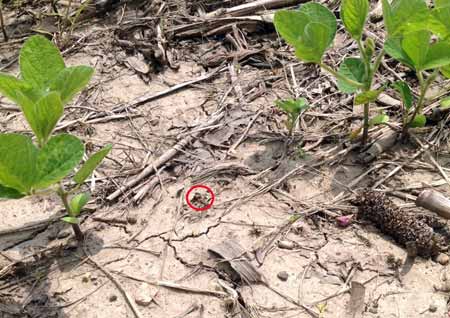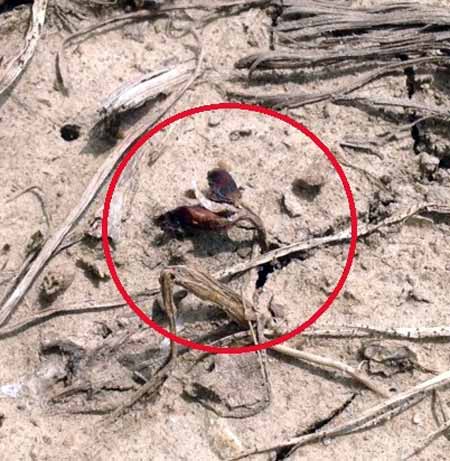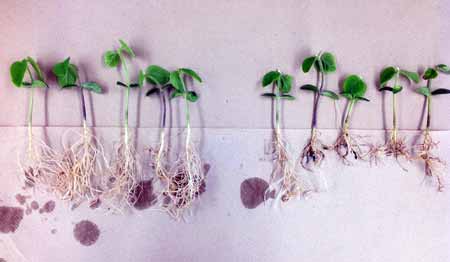Soybean seedling diseases – it may be more than just soil crusting
Wet soil and stressed plants are ideal conditions for many soybean seedling and root rot pathogens.
The start of the 2013 season has seen above average precipitation in many parts of Michigan. To make matters worse, the rain has been heavy, resulting in flooding and saturated soils. These conditions are not only an agronomic challenge for the seedling in terms of soil crusting and possible deep burial of the seed, but also in terms of seedling disease. Saturated soil conditions and stressed plants are ideal conditions for many seedling and root rot pathogens.

Poor stand.
When scouting fields for seedling disease, Michigan State University Extension says it is important to pay close attention to gaps in the stand; it is easy to overlook diseased seedlings. In the example in the image below, the seedling was killed shortly after emergence, so it was small and difficult to see. However, on closer examination, the dead seedling is visible on the soil surface. Seedling disease symptoms can be either pre- or post-emergent, so it is important to take a shovel and see what is going on below ground.

Close up of diseased seedling.
With the saturated soils we’ve been experiencing, we expect to find a lot Pythium which produce zoospores that swim in free water. These swimming spores are capable of “sniffing” out and swimming towards soybean roots. Phytophthora sojae also produces swimming zoospores and to date (as of July 2013) we have isolated Pythium and Phytophthora sojae from a soybean field in Lapeer County. Other common seedling diseases include Fusarium and Rhizoctonia.
We’ve noticed in the lab that some Pythium species may not kill soybean seedlings outright, but they certainly do reduce seedling vigor. The image below shows healthy seedlings on the left and seedlings that have been challenged with Pythium on the right. Notice the lesions on the roots of infected plants and, more importantly, the large difference in root volume and seedling size. Seedling diseases may not always result in obvious death, but reduction in vigor is something to be watchful for. When stand establishment is poor, it is important to check on those seedlings that have emerged. Do they have discolored roots? Is the tap root intact or rotted off? Are roots soft and rotting? How has this affected nodulation? Was a seed treatment used?

Healthy seedlings are on the left and seedlings that have been challenged with Pythium are on the right.
At the moment, we don’t know a great deal about how these seedling diseases affect root development later in the season and how this might affect yield; however, we are concerned that these early season diseases and conditions will set fields back and result in yield loss. In terms of management, there is little that can be done at this stage. However, it is important to make the most from this season and put to use what is learned for next season. Seed treatments can help protect seedlings from seedling diseases; however, under extreme conditions they can fail. We are currently conducting seed treatment trials across the state and will be excited to share those results at the end of the season.



 Print
Print Email
Email


